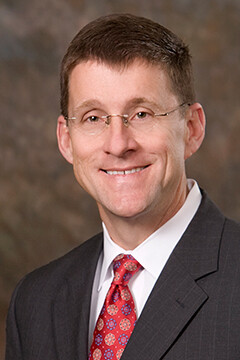
University of Nebraska President Hank Bounds announced June 5 a proposed budget plan that includes the lowest tuition increases in nearly three decades to ensure the university remains a great value compared to its peers.
The Board of Regents will consider the budget proposal, including an operating budget for 2015-16 and tuition rates for both 2015-16 and 2016-17 in order to help students and families better plan for the costs of college, at its June 12 meeting.
Bounds said the proposed budget advances key goals of the Board related to affordable access, investments in talent, economic growth and cost-effectiveness. He noted the university is in a position to achieve those objectives thanks in part to the level of state support the Governor and Legislature have provided for NU in the upcoming biennium.
“Governor Ricketts and members of the Legislature understand well the value of affordable, quality higher education in Nebraska,” Bounds said. “Their strong support, which continues a long partnership between the state and university based on shared goals for education and economic growth, will allow us to continue to effectively serve Nebraskans by preparing the state’s future workforce, attracting and retaining talent, and conducting research and outreach that solves critical challenges facing Nebraska and the world. Most importantly, our ongoing partnership with the state means college will remain within reach for Nebraskans who want to take advantage of the many opportunities higher education brings.”
The budget proposal includes tuition increases of 1.75 percent for 2015-16 and 2.5 percent for 2016-17. If approved, most Nebraska students would pay, on average, about $3.50 more per credit hour in 2015-16 and an additional $5 per credit hour in 2016-17.
The proposed increases – the first time the Board will consider two years’ worth of tuition rates since 2003 – follow back-to-back years of tuition freezes for Nebraska students. Bounds noted that even with the increases, tuition at each NU campus would remain well below the peer average. Current resident tuition and fees are at least 25 percent below the peers.
“The University of Nebraska provides an excellent education for a great value, but we know college still represents a meaningful investment for many,” Bounds said. “Setting tuition rates for multiple years is an approach that puts students and families first, allowing them to plan more effectively for the cost of their education. This is another way we can be transparent about our planning to Nebraskans, especially since we know how much state funding we will receive in the next two years.”
The university’s proposed budget increases need-based financial aid at the same rate as tuition, ensuring that net tuition costs do not go up for students with the greatest financial need. Overall, more than half of all NU undergraduates receive some form of grant aid that they do not need to pay back, including 7,000 who qualify for full tuition coverage through the Collegebound Nebraska program. NU student debt levels are at or below the peer averages.
Tuition and state funds are the two primary sources of revenue that support the university’s day-to-day operations. Bounds said moderate tuition increases combined with the increases in state appropriations would allow the university to both maintain affordability and make investments to ensure competitiveness and the pursuit of excellence.
The proposed budget includes a 3 percent increase in the university’s salary pool. Bounds said given the extremely competitive marketplace for higher education, the salary increase would allow the university to advance the Board’s goal of providing compensation in line with market averages in order to recruit and retain top talent. Faculty salaries at UNL and UNMC currently lag behind the peer averages.
Other new investments include $2.5 million for Programs of Excellence, which are leading academic programs across the four campuses, and $250,000 for college “pipeline” initiatives focused on expanding access to education to more students, particularly low-income, minority and first-generation students. Additionally, the state is providing targeted support for several NU economic development and other initiatives, including a new simulated learning center at UNMC, staffing and operations and maintenance at the Health Sciences Education Complex on the UNK campus, a new UNMC-UNO biomedical technology institute, the UNO-based Nebraska Business Development Center, and a proposed international trade and finance institute at UNL named in honor of former U.S. Secretary of Agriculture and UNL alum Clayton Yeutter.
Keeping tuition increases low while also investing in priorities will require the university to make budget cuts, continuing a commitment to financial efficiency. Based on the proposed budget and preliminary plan for 2016-17, NU would need to make more than $8 million in cuts in the next two years, on top of $80 million in cuts since 2000.
Bounds noted that the number of NU employees funded from tax and tuition dollars has remained relatively flat since 2000, despite significant enrollment growth and an expanded research enterprise over that time period. Today 40 percent of university employees are paid from non-tax dollars.
Regents also will consider the budget proposal for the Nebraska College of Technical Agriculture. The 1.75 percent and 2.5 percent proposed tuition increases mean NCTA resident undergraduates would pay $2 more per credit hour in 2015-16 and an additional $3 per credit hour in 2016-17. Additional state support will allow NCTA to hire a veterinarian and invest in talent in order to bring faculty salaries closer to market averages. The state’s investment also positions NCTA to build on its momentum in serving Nebraska agriculture. Recent progress includes new facilities for education and student life, academic programs that are meeting workforce needs, and enrollment growth and continued success in placing graduates in jobs in the state.








